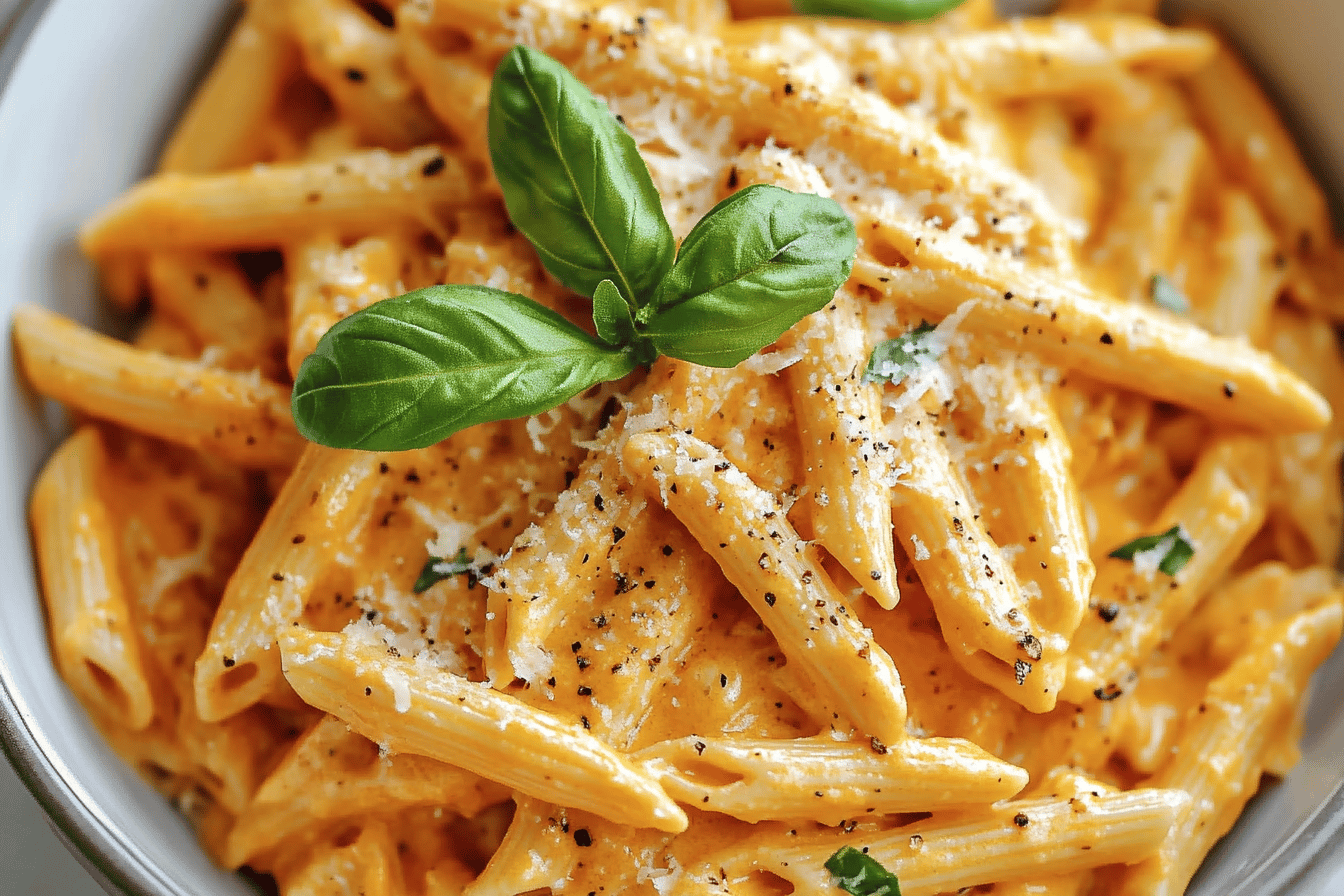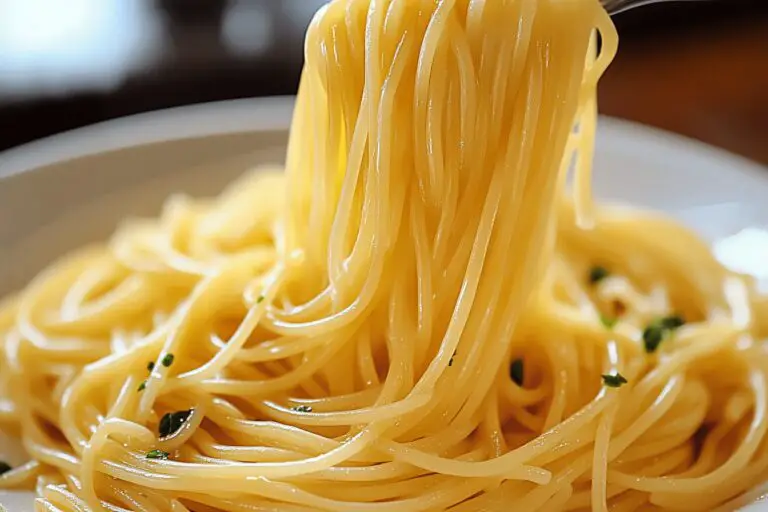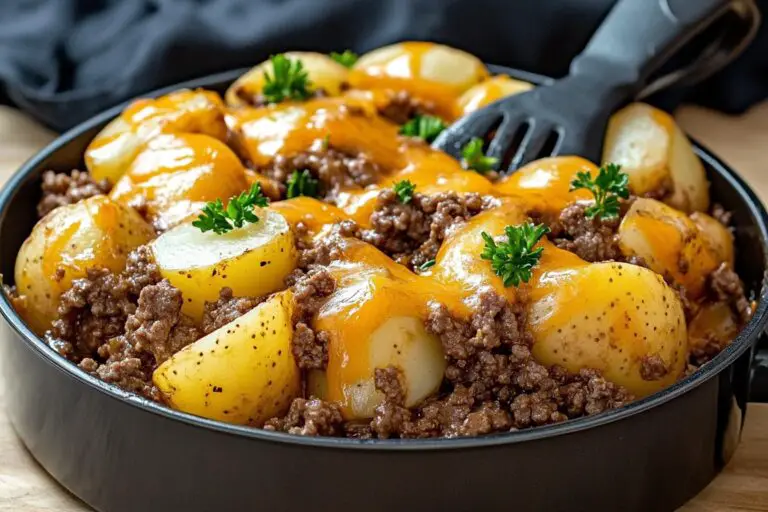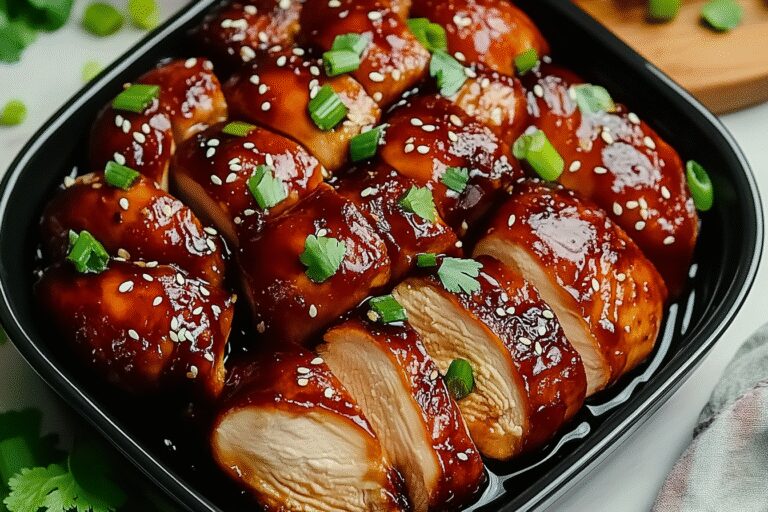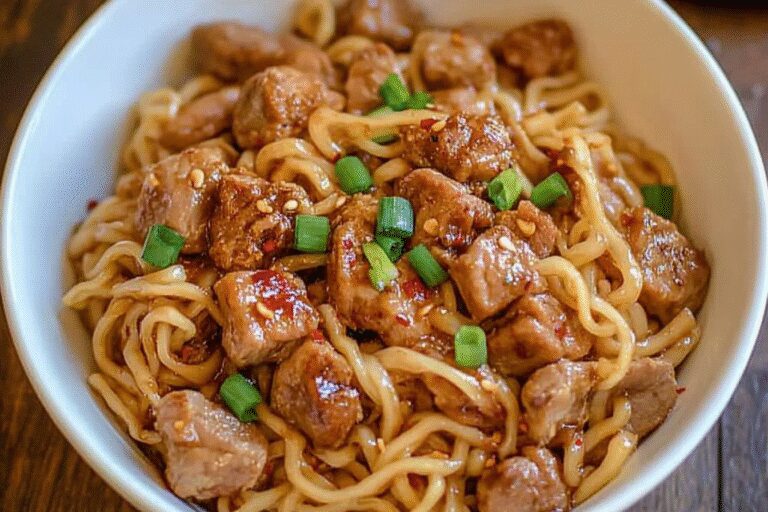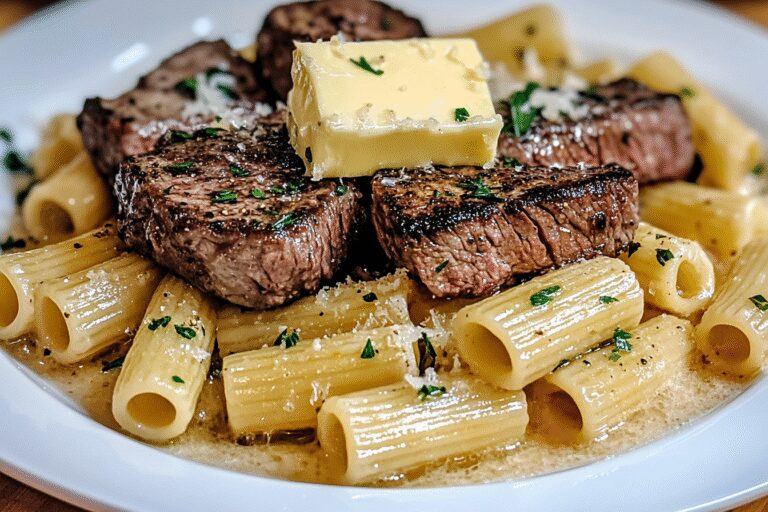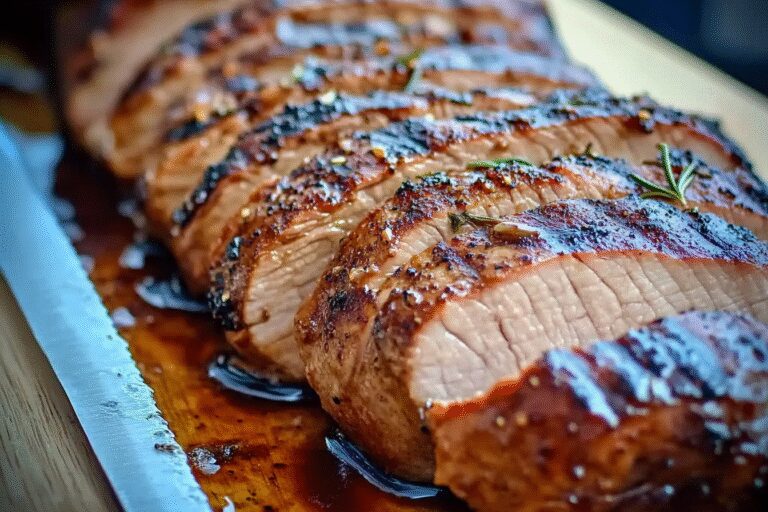Creamy Gouda One-Pot Pasta
Introduction
Looking for quick, delicious, and convenient meal ideas? One-pot pasta recipes might just be your new best friend in the kitchen. These dishes are perfect for busy weeknights, offering minimal cleanup and maximum flavor. From creamy options to tomato-based classics, slimmingviolet.com has curated a collection of recipes that are easy to follow and satisfying for all palates.
Detailed Ingredients with Measures
Each one-pot pasta recipe comes with its own list of ingredients, but generally, you’ll find staples like pasta, broth, vegetables, seasonings, and protein options. Examples include pasta (penne, spaghetti, or any variety of your choice), fresh vegetables like onions and garlic, canned tomatoes, chicken or vegetable broth, grated cheese, olive oil, and your favorite herbs and spices.
Prep Time
Preparing for a one-pot pasta dish couldn’t be easier. Most recipes from slimmingviolet.com require only 5 to 10 minutes of prep work. This might include chopping vegetables, grating some cheese, or gathering all ingredients to have them ready for cooking. With minimal effort, dinner can be both stress-free and delicious.
Cook Time, Total Time, Yield
The cook time for these recipes is typically around 20 to 30 minutes, making them a fantastic option for quick dinners. With prep included, you’re looking at a total time of under 40 minutes. These recipes are versatile, often serving 4 people, perfect for families or meal prepping for the week.
One-pot pasta recipes from slimmingviolet.com are just what you need for flavorful meals without a mess. The simplicity of combining all your ingredients in one pot while achieving rich, layered flavors makes these recipes a must-try. Whether you’re a seasoned cook or a kitchen novice, these meals deliver delicious results with minimal effort.
Detailed Directions and Instructions
Step 1: Prepare Your Ingredients
Gather all your required ingredients, ensuring they’re measured and ready to use. Wash and prep vegetables, if applicable, and have everything within reach before you start cooking.
Step 2: Choose Your Pot
Select a spacious and heavy-bottomed pot or large pan that will allow enough room for boiling the pasta and cooking the ingredients evenly.
Step 3: Add Liquids and Seasoning
To the pot, add the desired liquid such as water, stock, or cream. Season with salt and your preferred herbs and spices. Stir to combine the flavors.
Step 4: Layer the Ingredients
Layer the remaining ingredients into the pot. Begin with dry pasta, ensuring it’s submerged in the liquid, and then add your vegetables or protein, if included.
Step 5: Bring to a Boil
Place the pot on medium-high heat and bring the mixture to a boil. Stir occasionally to prevent the pasta or ingredients from sticking to the bottom.
Step 6: Lower Heat and Simmer
Once the pot reaches a boil, reduce the heat to a gentle simmer. Keep the pot uncovered during the cooking process to ensure the liquid reduces appropriately. Stir frequently.
Step 7: Check Cooking Progress
Check the pasta and other ingredients periodically to prevent overcooking the pasta or undercooking the vegetables. Adjust seasoning if needed as it cooks.
Step 8: Finish Cooking
Once the pasta has cooked al dente and the sauce has thickened to your liking, remove the pot from the heat. Give the dish a thorough stir to distribute the sauce evenly.
Step 9: Rest and Serve
Allow the pasta dish to rest for a couple of minutes before serving. This helps the flavors meld together and makes the sauce cling better to the pasta. Serve warm.
Notes
Note 1: Adjust Liquid Quantity
If the liquid evaporates too quickly before the pasta is fully cooked, you can add a small amount of water or stock to prevent sticking and ensure thorough cooking.
Note 2: Choose Fresh Ingredients
Using fresh vegetables, herbs, and proteins will enhance the overall flavor and texture of your one-pot pasta dish.
Note 3: Customize the Recipe
Feel free to customize the recipe to suit your dietary preferences or ingredient availability. Swap out proteins or vegetables, or experiment with different herbs and spices.
Note 4: Monitor Cook Times
Different types and brands of pasta may vary in cooking times, so keep an eye on the pot and make adjustments as needed.
Note 5: Storing Leftovers
Store any leftovers in an airtight container in the refrigerator for up to 3 days. Reheat gently in a pot or microwave, adding a splash of water or stock if the sauce has thickened too much.
Note 6: Cheese Option
If the recipe calls for cheese, try adding it at the end of the cooking process to prevent it from clumping and ensure smooth melting.
Cook techniques
Choose the Right Pot
When making a one-pot pasta recipe, it’s crucial to select a pot that is large enough to comfortably fit all the ingredients. Ensure it has sufficient depth to prevent boiling over and accommodate the liquid for cooking.
Layer Ingredients Strategically
Add the ingredients to the pot in a specific order. Start with sturdier ingredients, like pasta and vegetables that require more time to cook, then add the liquids and seasonings.
Monitor the Liquid Level
Cooking pasta in one pot means the liquid is absorbed by the pasta as it cooks. Keep an eye on the liquid level and add more water or broth, if necessary, to prevent the dish from drying out.
Stir Regularly
Regularly stirring the pasta during cooking helps prevent it from sticking together or to the bottom of the pot. Be gentle if the pot includes delicate ingredients, such as vegetables or protein.
Achieve the Perfect Balance
To achieve the best flavor, ensure there’s a balance of water or broth and seasonings. Too much liquid can dilute the taste, while too little can result in undercooked pasta.
Simmer, Don’t Boil
Instead of maintaining a rolling boil, opt for a simmer when cooking the pasta. This allows the pasta to absorb the flavors of the liquid and ensures even cooking.
Use the Resting Time
Once cooked, let the pasta rest for a few minutes with the lid on. This allows any remaining liquid to be absorbed and helps the dish come together perfectly.
FAQ
What are one-pot pasta recipes?
One-pot pasta recipes are meals where all the ingredients, including the pasta, cook together in a single pot. This method allows you to reduce the cleanup while infusing the pasta with the flavors of the other ingredients.
Can I use any type of pasta for one-pot recipes?
While most types of pasta work well in one-pot recipes, shorter varieties like penne, fusilli, or cavatappi cook more evenly. Avoid using delicate pasta that might break apart too easily.
What liquid is best for cooking one-pot pasta?
Broth, such as chicken, vegetable, or beef, is commonly used in one-pot pasta recipes because it adds flavor. Water with seasoning can also be used depending on the recipe.
Do one-pot pasta recipes require a lid while cooking?
Some recipes may require covering the pot during cooking to help steam the pasta and maintain moisture. Follow the instructions to know when a lid is needed.
How can I prevent pasta from sticking in one-pot recipes?
Stir the dish regularly during cooking to keep the pasta from clumping or sticking to the bottom of the pot. Adding enough liquid also helps maintain proper consistency.
How can I adjust the recipe for more servings?
To increase the serving size, simply double or triple the ingredients as needed. Make sure your pot is large enough to accommodate the additional amounts of pasta and liquid.
Can I customize one-pot pasta recipes?
Yes, one-pot pasta recipes are highly versatile. You can substitute vegetables, proteins, and seasonings to suit your preferences while following the basic cooking technique.
How do I store leftovers from one-pot pasta recipes?
Let the pasta cool completely before transferring it to an airtight container. Store it in the refrigerator for up to 3-4 days. Reheat using a stovetop or microwave, adding a splash of water or broth to prevent dryness.
Are one-pot pasta recipes suitable for meal prep?
One-pot pasta recipes can be a great option for meal prep since they are quick to prepare. However, avoid overcooking the pasta initially if reheating later, as this can make it mushy.
What’s the benefit of cooking pasta in one pot?
The primary benefits include fewer dishes to clean, quicker preparation time, and the added flavor since the pasta cooks directly in the same liquid as the other ingredients.

Conclusion
One-pot pasta recipes are a fantastic way to create delicious, comforting, and satisfying meals with minimal effort and cleanup. By combining quality ingredients, seasonings, and fresh produce, you can create flavorful dishes that the whole family will love. They’re perfect for busy weeknights or a cozy weekend dinner, and the variety of combinations ensures there’s something to please everyone’s palate. Give these dishes a try and enjoy the convenience of one-pot cooking!
More recipes suggestions and combination
One-Pot Creamy Tomato Basil Pasta
A creamy yet light dish combining the classic flavors of tomato, basil, and a touch of parmesan. Perfect for a quick and fresh meal.
One-Pot Garlic Shrimp Pasta
Savor the rich taste of garlic, tender shrimp, and al dente pasta all cooked together for a dish full of bold flavors.
One-Pot Veggie Alfredo
A creamy and comforting pasta dish packed with assorted fresh vegetables, perfect for a meatless dinner option.
One-Pot Chicken Pesto Pasta
A delightful blend of juicy chicken, earthy basil pesto, and perfectly cooked pasta to impress your taste buds.
One-Pot Spinach and Ricotta Pasta
This hearty dish combines fresh spinach, creamy ricotta, and your favorite pasta for a comforting vegetarian option.
One-Pot Spicy Sausage Pasta
Add some heat to your mealtime with spicy sausage, fire-roasted tomatoes, and a mix of seasonings cooked in one pot.
One-Pot Cheesy Broccoli Pasta
A kid-friendly recipe featuring tender broccoli, gooey cheese, and pasta—all in one easy dish.
One-Pot Lemon Herb Chicken Pasta
Liven up your table with a zesty mix of lemon, fresh herbs, and tender chicken cooked alongside your favorite pasta.
One-Pot Mexican Pasta
Bring some fiesta to your kitchen with flavors of bell peppers, beans, taco seasoning, and a hint of cheese melting throughout.

